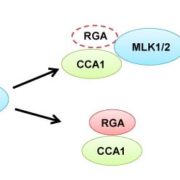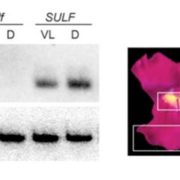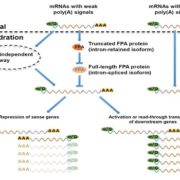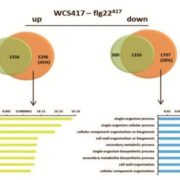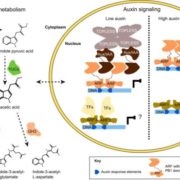Alone or together: BRI1 signaling controls root growth in a cell-autonomous manner
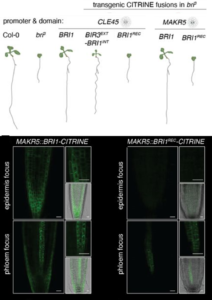 Root growth is controlled by a dense network of hormone signals working in shared and distinct root zones and cell types. Brassinosteroids (BR) control root growth through activated signaling in vascular and epidermal tissues, but it is unclear how BR signals in each tissue contribute and whether there are cell non-autonomous effects. Using transgenic lines deficient in BR perception (bri3) but complemented with a functional BRI1 under the control of cell-type-specific promoters, Blanco- Touriñán et al. revealed that BR perception in phloem cells is largely sufficient to rescue root growth. In these plants, fluorescently labeled BRI1 revealed that BRI1 is not only present in phloem cells but is also ectopically expressed in the epidermis and other cell types, though at low levels. Employing a recoded but functional version of BRI1 (BRI1REC), the authors demonstrated that specific intrinsic regulatory sequences within the BRI1 gene body, specifically the coding region, are crucial for this ubiquitous low-level expression and are required for a proper rescue of the bri3 mutant phenotype. Such an effect of a gene primary structure controlling its expression patterns was relatively unknown and is an interesting topic for further studies. To conclude, the authors elegantly demonstrated a mechanism of BR signaling through its receptors in a cell-autonomous manner, aided by the intrinsic regulatory expression mechanisms of the genes. (Summary by Thomas Depaepe @thdpaepe) bioRxiv 10.1101/2024.05.13.593848.
Root growth is controlled by a dense network of hormone signals working in shared and distinct root zones and cell types. Brassinosteroids (BR) control root growth through activated signaling in vascular and epidermal tissues, but it is unclear how BR signals in each tissue contribute and whether there are cell non-autonomous effects. Using transgenic lines deficient in BR perception (bri3) but complemented with a functional BRI1 under the control of cell-type-specific promoters, Blanco- Touriñán et al. revealed that BR perception in phloem cells is largely sufficient to rescue root growth. In these plants, fluorescently labeled BRI1 revealed that BRI1 is not only present in phloem cells but is also ectopically expressed in the epidermis and other cell types, though at low levels. Employing a recoded but functional version of BRI1 (BRI1REC), the authors demonstrated that specific intrinsic regulatory sequences within the BRI1 gene body, specifically the coding region, are crucial for this ubiquitous low-level expression and are required for a proper rescue of the bri3 mutant phenotype. Such an effect of a gene primary structure controlling its expression patterns was relatively unknown and is an interesting topic for further studies. To conclude, the authors elegantly demonstrated a mechanism of BR signaling through its receptors in a cell-autonomous manner, aided by the intrinsic regulatory expression mechanisms of the genes. (Summary by Thomas Depaepe @thdpaepe) bioRxiv 10.1101/2024.05.13.593848.



